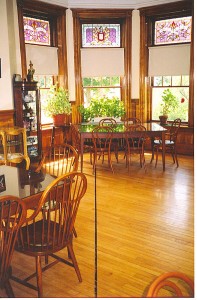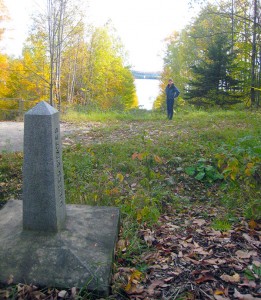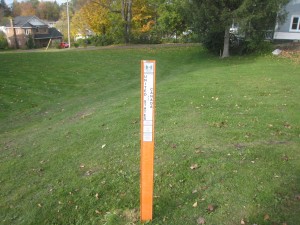Border quirks
A friend sent me a jaunty video about the U.S./ Canada border this past week. It doesn’t break new ground or anything like that, but it’s pretty interesting. Raise your hand if you thought the U.S./Canada border mostly followed the 49th parallel in a straight line. Then watch the video. There are zigs and zags, at least one pronounced bump and several severed communities.
The vignette is by C. P. G. Grey, who just likes explaining complicated things in quick little videos. He’s done a bunch. Most are about geography, such as: “The Difference between United Kingdom, Great Britain and England explained” and “Can Texas secede from the Union?” (Answer: pretty much no).
Grey also branches out to other topics of amusement or interest. (“Coffee: the Greatest Addiction Ever” or “How to become Pope“.)
Good fun! But I digress. Back to our border. First, if this topic is of interest to you, give the video a watch. (The whole thing is 5:26 minutes and it goes fast.) Second, consider the unique circumstances for residents in places like Minnesota’s Northwest Angle, Washington State’s Point Roberts or – closer to home – Derby Line, Vermont.

International border runs through the Haskell Free Library and Opera House, Derby Line VT/Stanstead QC. (Source: Wikipedia)
The spouse and I did a three-day weekend get away to Vermont a few years ago, mainly to go see Derby Line, especially the famous Haskell Free Library and Opera House, where the border cuts right through the main reading room.
Unfortunately, we went just when the web-posted summer hours shifted to shorter fall hours. The main goal of that trip – seeing the interior of the library – was unavailable for the rest of our visit. (It had closed by the time we arrived after 2 pm on a Saturday and was also closed for the Monday holiday.) We had a good time anyway, but shall have to return to tour the interior of both attractions.
You might think it foolish to build a public attraction smack on the border. But that decision harkens back to a simpler time – missed by many – in terms of living together with fewer formalities.
Indeed, the people of Derby Line have been much put-upon now that tighter border security can make crossing the street a criminal activity. (Residents are supposed to detour and check in at the border station every time internal village trips take them from one country to the other.)
It’s easy to decry what may seem like foolish over-kill. But lawbreakers do exist and some will take advantage of fuzzy zones like Derby Line, as detailed in this National Post article about gun-runners and border-jumpers along that “porous” Quebec-Vermont crossing.
Most of the time the rules have been ratcheted up by U.S. officials in response to post-9/11 concerns. But sometimes it’s the Canadians who want tighter security, as in the case of the RCMP’s flowerpot barrier.
Feel free to add your own stories about border or border crossing quirks, or wishes for how you’d prefer things to go.
Tags: border security, C. P. G. Grey, canada, Derby Line, geography, Haskell Free Library and Opera House, politics, tourism










Ah for the good old days, pre-911, when a US/Canadian licensed driver could pass forth and back with but a few questions at the receiving boarder; that is what I would wish for.
However; even in the good old days a boarder crossing could become eventful for the honest but oblivious traveler. Back in the 80’s while working at Platsburgh AFB a GI friend of mine and a friend of his, also a GI, traveled to Montreal for an evening of pseudo-libation, they had no intention to waste any pouring it upon the Earth and ended up spending the night so as to be capable of rational discourse upon reentry to the US. My friend was a passenger in the vehicle owned by his friend whose wife was visiting her relatives back in the Midwest thus enabling the Montreal night out. They pulled up and stopped at the US entry point and their vehicle license plate was scanned and the facts about the vehicle presented the boarder officer to enable him to question the perps, I mean GIs appropriately. In the midst of a seemingly pleasant line of questions the officer suddenly snapped an intense question to the driver “WHERE WERE YOU BORN”? Startled by the volume level of the question the driver stammered “um, um, um” and within seconds both the driver and my friend were legs spread with their hands on the roof of the vehicle surrounded by a number of officers and being searched. One would think they are GIs with US military IDs what more could go awry? In the breast shirt pocket of the driver an aluminum foil packet containing a white powder was discovered which upped the ante to a strip search of the vehicle, all of this prior to ascertaining that the drivers claim that the packet contained powder sugar covered dates was verified. When the trunk of the vehicle was opened it was found to be chock full of dirty laundry which the driver had been placing therein for the 2-3 weeks his wife had been gone. Actually the laundry worked in their favor as subsequent to it’s removal and re-interment in the trunk their story gained some credence and within an hour or so they were once again on their way to Plattsburgh.
I never carry powder sugar covered dates with me when crossing to or from Canada.
I enjoyed the original blog entry and Ken’s story. His story reminds me of my own. We also lived at Plattsburg AFB in the mid-60’s. I was 6 at the time and my parents say we went to Canada to go shopping quite frequently. The question of “where were you born” was one always asked. As I was born in Japan, the answer had the possibility of getting a bit messy. My parents asked me to pick my favorite state and say that I was born there. The alternative was to always bring my birth certificate, citizenship, and certificate of child being born to American parents in foreign country papers. I remember the thrill of conspiracy, the understanding of how much simpler this idea was and the fun of picking a state, any state. I usually picked Arizona, a place I enjoy visiting to this day.